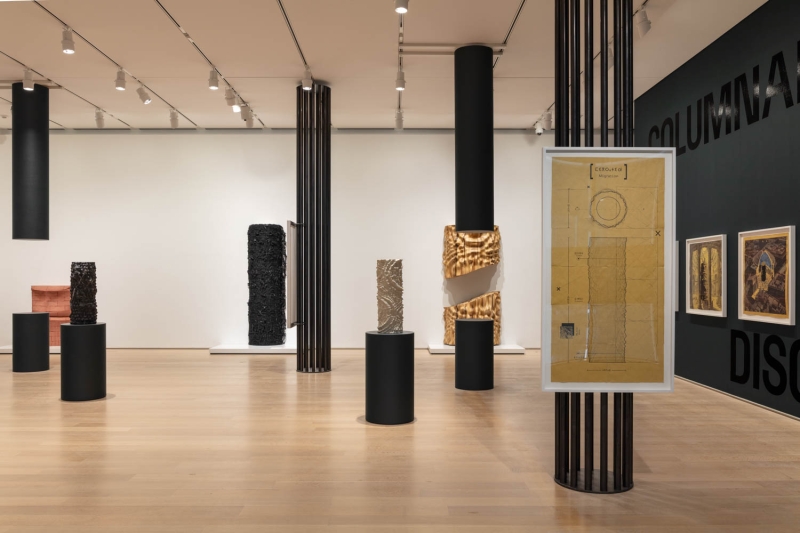Contents
- 1 How Germane Barnes’s Work Reflects His Roots
- 1.1 Interior Design: What drew you to the architectural field?
- 1.2 ID: You founded Studio Barnes. Can you tell us about it and the work you have done so far?
- 1.3 ID: You’re also a professor and a full time researcher. How have you managed to balance being an architect?
- 1.4 ID: What inspired the project “Columnar Disorder?”
- 1.5 ID: Why was it important for you to create this project?
- 1.6 ID: Is it safe to say this is an extensive of your 2020 exhibition “Reconstructions: Architecture and Blackness In America?”
- 1.7 ID: This project took immense research that resulted in each of the columns. What was the process like for you?
- 1.8 ID: Why were you interested in also making this into sculptures and collages? Was it a means to guide viewers through this project in different forms?
- 1.9 ID: You recently unveiled the Beauty of Labor capsule collection in collaboration with Lexus and Dilo for Miami Art Week. Tell us about the collection and what it was like collaborating with Lexus and Dilo?
- 1.10 ID: Are you working on new projects for 2025?
Exhibition showroom. Photography courtesy of Germane Banes.
In Germane Barnes’s architectural practice, challenging norms is a central theme. The architect has spent the better part of a decade making work that disrupts original aspects of the architectural world, restructuring them through the lens of Black experiences. Regarded as an architectural voice to watch, his transformative research has been highly acknowledged. For example, in 2022, Barnes won the prestigious Miami Design District Annual Neighborhood Commission, creating an immersive Carnival-themed installation. Beyond being a practicing architect, Barnes is also an educator and the founder of Studio Barnes, where he makes designs that deepen the connection between craft and identity.
His most recent project “Germane Barnes: Columnar Disorder,” which ran from September 1, 2024 to January 27, 2025, at the Art Institute Chicago, marks his first-ever solo exhibition in a museum. The project closely reviews the legacy of classical order: the Doric, Ionic, and Corinthian, as Barnes calls them, and reimagines them through the history and values of African diaspora. Barnes centers the exhibition on the designs of three columns using drawings, collages, and sculptures made from brick, hair, and wood to visually represent them. Each of the columns serves as a subjective pillar. The Identity Column celebrates the Black body, and beauty. The Labor Column considers how slavery fueled American economic growth, and the Migration Column recognizes water as a site of Black memory, loss, and selfhood.
Interior Design sits with Germane Barnes to discuss his force of inspiration, architectural journey, and first-ever solo museum show, which recently wrapped at the Art Institute of Chicago.
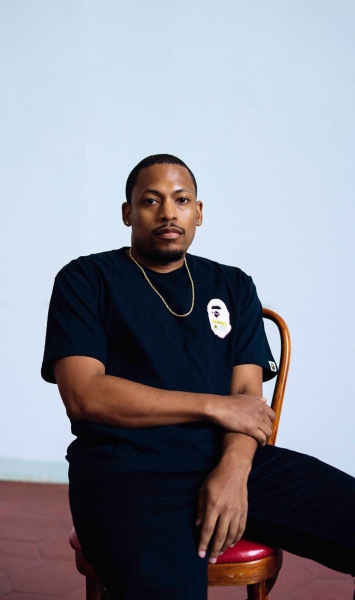
Portrait of Germane Barnes in Rome at The American Academy. Photography by Cole Ndelu.
How Germane Barnes’s Work Reflects His Roots
Interior Design: What drew you to the architectural field?
Germane Barnes: I am a native Chicagoan who only ever wanted to be an architect. While in elementary school at Edison Regional Gifted Center, I recall building a model of The Guggenheim for a seventh grade assignment. Later, I attended the University of Illinois Urbana-Champaign for my undergraduate architecture studies. I then secured my first architecture internship at Sean J. Mackay Architect located in Cape Town, South Africa. After four months working, in the spring of 2009, I attended Woodbury University for my graduate architecture degree. Since I graduated in the spring of 2012, I have since worked in the design world.
ID: You founded Studio Barnes. Can you tell us about it and the work you have done so far?
GB: I founded Studio Barnes in 2016 after being the designer-in-residence for the Opa-Locka Community Development Corporation (now known as 10 North). Our work centers on the Black experience, specifically through the lens of the United States Great Migration. We design at multiple scales, ranging from chairs inspired by Black hair to pavilions that reference my time living in South Africa coupled with Caribbean breeze blocks. We focus on identity and collaboration as a design process.
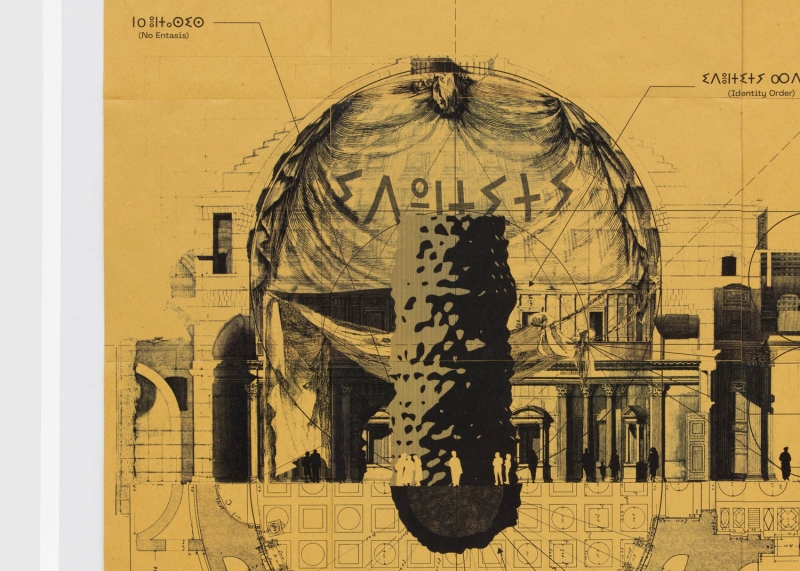
Pantheon II, 2023. Photography by Greg Carideo. © Germane Barnes.
ID: You’re also a professor and a full time researcher. How have you managed to balance being an architect?
GB: Teaching truly compliments the architectural practice as it allows me to influence academia and make a larger impact beyond designing objects. The lack of representation in academic circles often steers students away from the field. My contributions as a professor will always outweigh my professional exploits.
ID: What inspired the project “Columnar Disorder?”
GB: I wanted to recast the canonical foundations of Western architecture through the lens of the African diaspora. Critically reflecting on the enduring legacy of the Classical orders—the Doric, Ionic, and Corinthian—whose distinctive columns continue to proliferate in our built environment today, I was attentive to how Eurocentric histories of classical architecture have neglected the migration of North African building traditions across the Mediterranean during antiquity. I wanted the project to recuperate this legacy through an architectural counter-narrative.
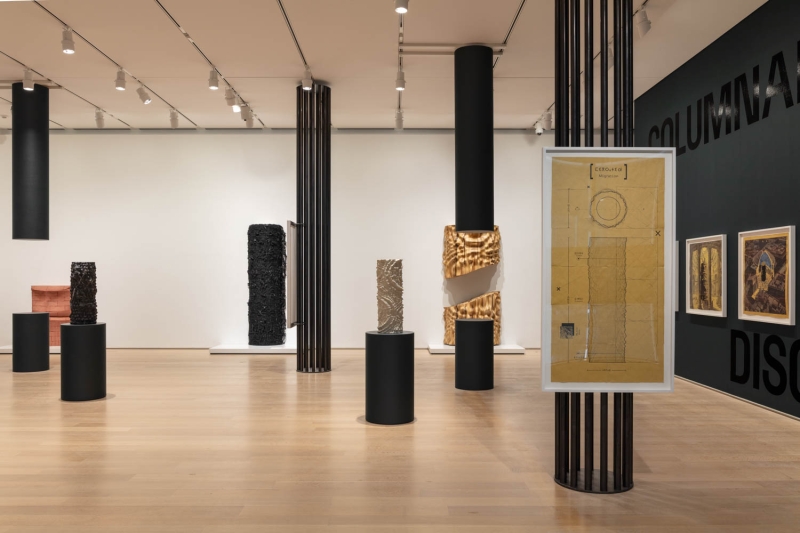
Exhibition showroom. Photography courtesy of Germane Banes.
ID: Why was it important for you to create this project?
GB: It was important to reimagine these orders because so much of architecture education is incorrect or improperly attributed. It’s incredible that while history shows us that Egypt had columns first, most texts and curriculum start with Greece and Italy. This blatant disregard for proper chronology is unfortunate. The erasure of Africa’s contributions was also flagrant. I wanted to reorient and provide proper perspective while also creating new narratives.
ID: Is it safe to say this is an extensive of your 2020 exhibition “Reconstructions: Architecture and Blackness In America?”
GB: No, these are completely different bodies of work. “A Spectrum of Blackness,” the MoMA work, was a personal discovery of Blackness in Miami and how food and water could be a link across cultures. “Columnar Disorder” examines larger architecture discourse.
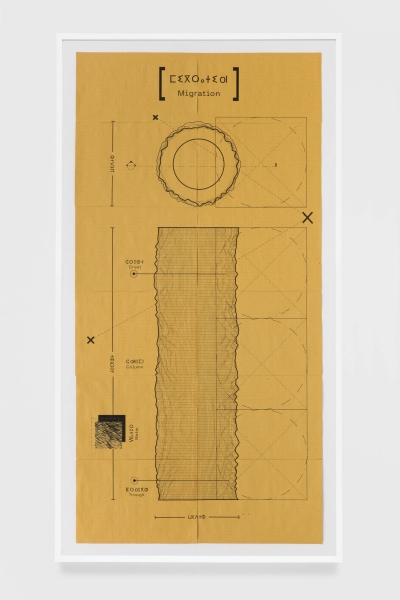
Migration Column sketch. Photography courtesy of Germane Barnes.
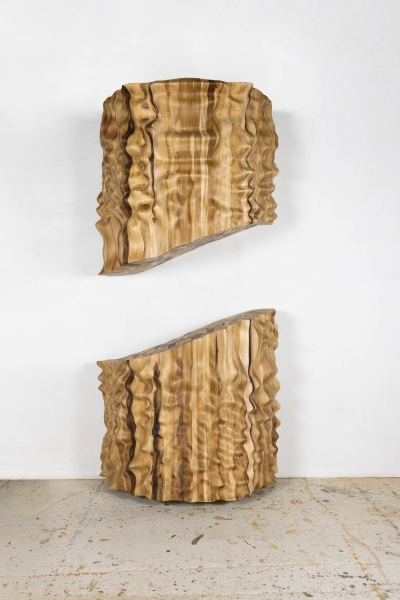
Migration Column. Photography courtesy of Germane Barnes.
ID: This project took immense research that resulted in each of the columns. What was the process like for you?
GB: The process of creating the Identity, Migration and Labor orders was truly enjoyable. I traveled through all regions of Italy observing community groups, researching various classical construction methods, and looking through archaeological and anthropological texts. After six months in Italy at the American Academy in Rome, I debuted the three orders at the 2023 Venice Architecture Biennale. The total time spent on the project was approximately a full calendar year. We utilized various means, from sketches to scaled physical models to 3D software.
ID: Why were you interested in also making this into sculptures and collages? Was it a means to guide viewers through this project in different forms?
GB: Accessibility is my primary goal with architecture and design—meaning individuals who do not possess a design education can still enjoy the work. The legibility of architecture drawings can be difficult to decipher. However, sculpture and collage are mediums that the average person is more familiar with. I always try to remove barriers to work.
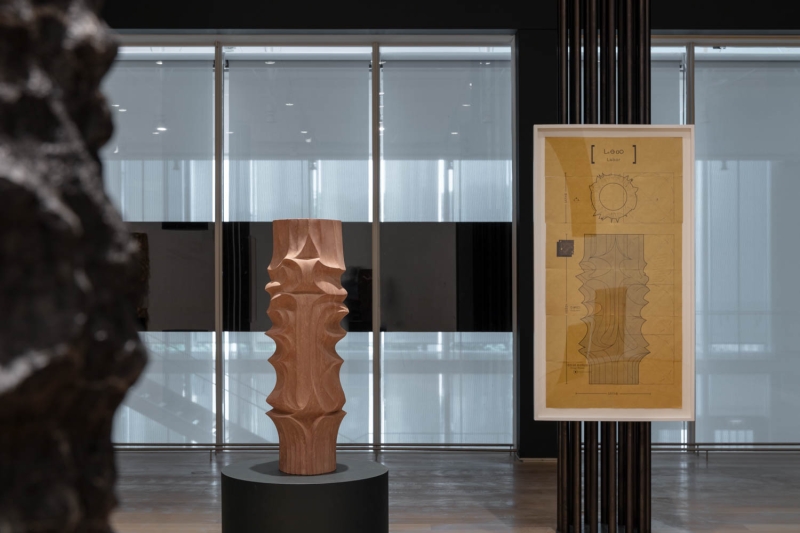
Labor Column. Photography courtesy of Germane Barnes.
ID: You recently unveiled the Beauty of Labor capsule collection in collaboration with Lexus and Dilo for Miami Art Week. Tell us about the collection and what it was like collaborating with Lexus and Dilo?
GB: This was my second time working with Lexus and every time it has been enjoyable. The Beauty of Labor capsule is a miniature version of the Labor Column. The column exemplifies that much of the beauty we see in the world comes from intense labor that is usually hidden. The more the public understands the amount of care and time is placed in constructing objects we see on a daily basis the better the profession.
ID: Are you working on new projects for 2025?
GB: Yes, we have three big projects that we are proud of: We were selected for the Miller Prize in the 2025 cycle of Exhibit Columbus. We should be completing the construction documents on our Fort Worth, Texas, project, the Fred Rouse Center for Community Healing. We will be in construction for our project in Delray Beach, Florida, for Community Holdings. A local non-profit is aiming to restore a historically Black district in Palm Beach County.
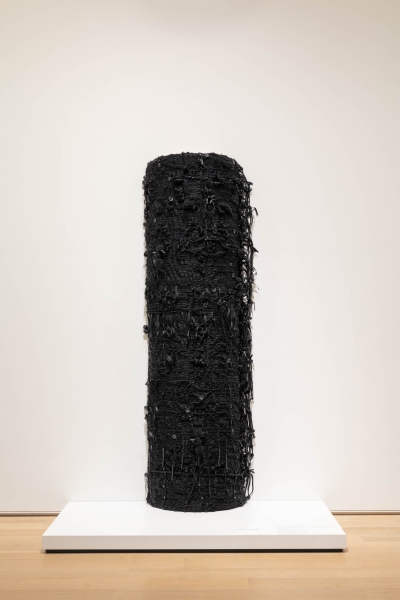
Identity Column. Photography courtesy of Germane Barnes.
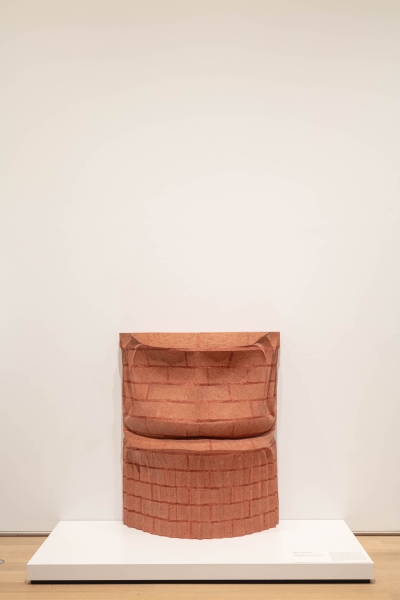
Base of Labor Column. Photography courtesy of Germane Barnes.
